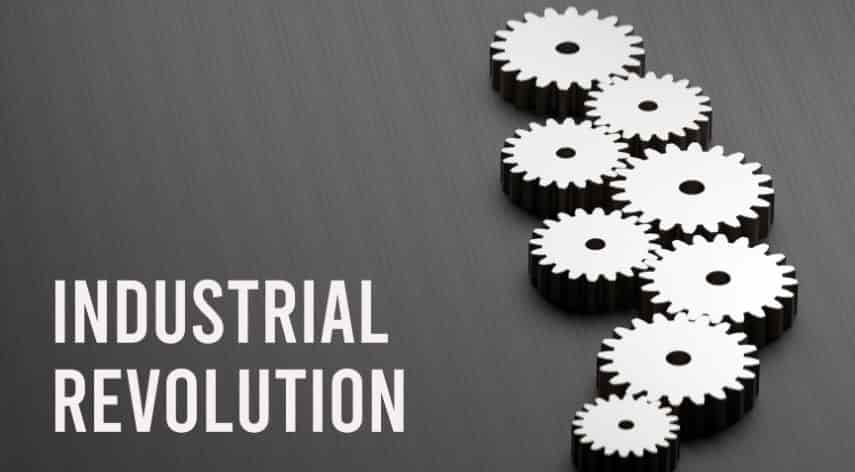Monitors of the Fourth Industrial Revolution

Historians believe that there were three industrial revolutions: the first is the introduction of a steam engine, the second is the use of electricity, the third is the transition to information and communication technologies. Now we are at this point. But the same historians suggest that there will soon be a fourth revolution – with the use of cyber-physical systems. This means that humanity will need a lot of industrial display monitors.
Table of Contents
ToggleHigh-quality data visualization
In Internet of Things (IoT) and Industry 4.0 applications more customers need to be able to visualize and process data from computers. Data visualization and process control aids at all levels of decision making and is best achieved with a Human Machine Interface (HMI).
This is a set of engineering solutions that contribute to the interaction of the operator with the machines controlled by him. For example, an LED monitor allows users to interact with a machine or device in manufacturing processes. HMI helps bridge the gap between how users communicate with processes and automation data.
To fill this gap, a popular option is to implement an LED monitor system that matches the manufacturing floor and industrial application process.
When it comes to choosing LED LCD monitors for production shops, the first major decision is whether to choose commercial or industrial grade monitors. When considering different monitor prices, it may seem that commercial monitors are the cheaper option, but this is an all-too-common mistake.
Commercial monitors are not designed or rated to withstand the harsh use and application environment of Industry 4.0. Specifically, we’ll explore reasons why it’s better to adopt an industrial LED-backlit LCD monitor instead of a commercial one.
1. Harsh operating conditions
First and foremost, industrial grade LED LCD monitors are designed and built for industrial environments that go hand in hand with Industry 4.0 application. Commercial monitors are designed for offices and retail. They don’t withstand harsh industrial environments where they have to deal with
- high vibrations
- temperature and power fluctuations
- dirt
- dust
- heavy use
The average glass on a commercial touchscreen is only designed to last a certain number of users. Commercial monitors don’t stand up to constant use in industrial settings.
2. Industry 4.0 specifications
Industrial grade monitors can also withstand the harsh requirements of various industries, such as special cleaning. Many industrial applications, especially those associated with food and beverage production processes, have cleaning specifications — industrial screens can meet these requirements based on specific device characteristics.
3. Savings through uptime
During a monitor replacement, the machine is down and the whole process stops. Consistency is lost and the workforce becomes unproductive. The introduction of an industrial LED LCD monitor will help avoid these costly problems. Monitors with a rugged industrial design, designed to work in harsh environments and must meet much higher requirements than commercial devices — you get a quality product with a long service life.
Beetronics manufactures a wide range of industrial monitors in various sizes to suit specific environments, not to mention that the company offers high quality monitors and touchscreens for various industries. Industrial LED LCD screens have:
- backlight life of 50,000 hours
- high IP rating bezel
- wide temperature support
- versatile mounting options
- opportunity to install for a variety of uses.
Scope of industrial monitors
The main consumers of such equipment are industrial enterprises with harsh operating conditions in the following areas:
- energy
- transport
- construction
- telecommunications
- light and food industry
- military-industrial complex
The monitors have a variety of mounting options:
- built into any surface or device
- mounted on the wall
- install on a floor stand
Rugged monitors can be mounted either vertically (portrait) or horizontally (landscape).
Protection standards
The general functionality of industrial monitors remains more or less the same across industries. But a specific scope requires certain protection standards, which depend on the environment in which this gadget operates. There are the most common protocol indexes:
- IPxx – hidden numbers indicate the degree of protection against mechanical shock and water resistance. Monitors in the industry, as a rule, have indexes 65 or 67 (Beetronics industrial monitors are marked IP65/Nema4). Also, full and frontal protection of the device is performed according to this index.
- IKxx – an index of physical impact protection of electrical equipment and refers to impact energy in Joules, as if an object of a certain weight fell on the product from a certain height. Two zeros in the index statement means that the monitor is not protected. 01 – withstands a 150 g drop from a distance of 10 cm.
- ATEX – these protection standards apply to employees who interact with the monitor in a potentially explosive situation — a large concentration of vapor or gas, as well as – a large amount of dust.
- MIL-STD-810G/F – a purely American standard for monitor reliability. It was originally introduced in the military workflow, but now is widely used in commercial trade to describe the conformity of the gadget’s working conditions in a given environment.
Compliance with the norms and parameters of protection affects the efficiency of the device – both in terms of functionality and from the standpoint of the operator’s health.
Which touchpad to choose?
With all the variety of monitors used in different industrial sectors, when choosing a device, the buyer is at a crossroads: what type of screen to choose – capacitive or touch.
Resistive touch screen advantages:
- lower manufacturing cost
- higher sensor resolution – you can easily press small buttons with a touch of your finger
- fewer accidental touches
- feeling any object touching the screen strongly enough
- more resistant to elements such as heat and water
Advantages of capacitive touch screen:
- more durable
- sharper images with better contrast
- providing multi-touch
- more reliable — will work even if the screen is cracked (until you replace it)
- more sensitive to light touch
The choice of using a capacitive or resistive touch screen depends largely on the application of the device. In the manufacturing sector, devices with resistive screens are more commonly used. This is due to the fact that users must wear gloves to work.
Alfred Williams, a distinguished business writer, navigates the corporate landscape with finesse. His articles offer invaluable insights into the dynamic world of business. Alfred's expertise shines, providing readers with a trustworthy guide through the complexities of modern commerce.
Recommended For You
Spread the loveThe name Broderick Bevineau makes you think of new ideas and starting your own business. Bevineau has made
Spread the loveThe popularity of Airbnb has paved the way for many entrepreneurs to build businesses in the short-term rental
Spread the loveCreating a well-designed and functional website starts long before coding begins. The prototyping phase is a critical step




